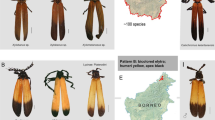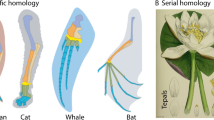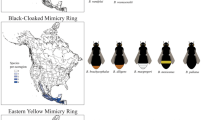Abstract
ACCIDENTAL resemblances between insects are to be expected. The immense number of species and the necessary limitation in the variety of colours and patterns must lead to coincidences, as, I believe, was first pointed out by Mr. F. E. Beddard in his book on “Animal Coloration.” The coincidences would, of course, be relatively more numerous when the patterns are simple. Accidental resemblances being independent of locality and of an origin based upon utility, it follows that a very small proportion of the total number of cases are to be expected to occur under conditions which are the characteristic concomitants of true mimetic resemblance.
This is a preview of subscription content, access via your institution
Access options
Subscribe to this journal
Receive 51 print issues and online access
$199.00 per year
only $3.90 per issue
Buy this article
- Purchase on Springer Link
- Instant access to full article PDF
Prices may be subject to local taxes which are calculated during checkout
Similar content being viewed by others
Author information
Authors and Affiliations
Rights and permissions
About this article
Cite this article
POULTON, E. A Case of Pseudo-mimicry . Nature 67, 439–440 (1903). https://doi.org/10.1038/067439f0
Issue Date:
DOI: https://doi.org/10.1038/067439f0
Comments
By submitting a comment you agree to abide by our Terms and Community Guidelines. If you find something abusive or that does not comply with our terms or guidelines please flag it as inappropriate.



